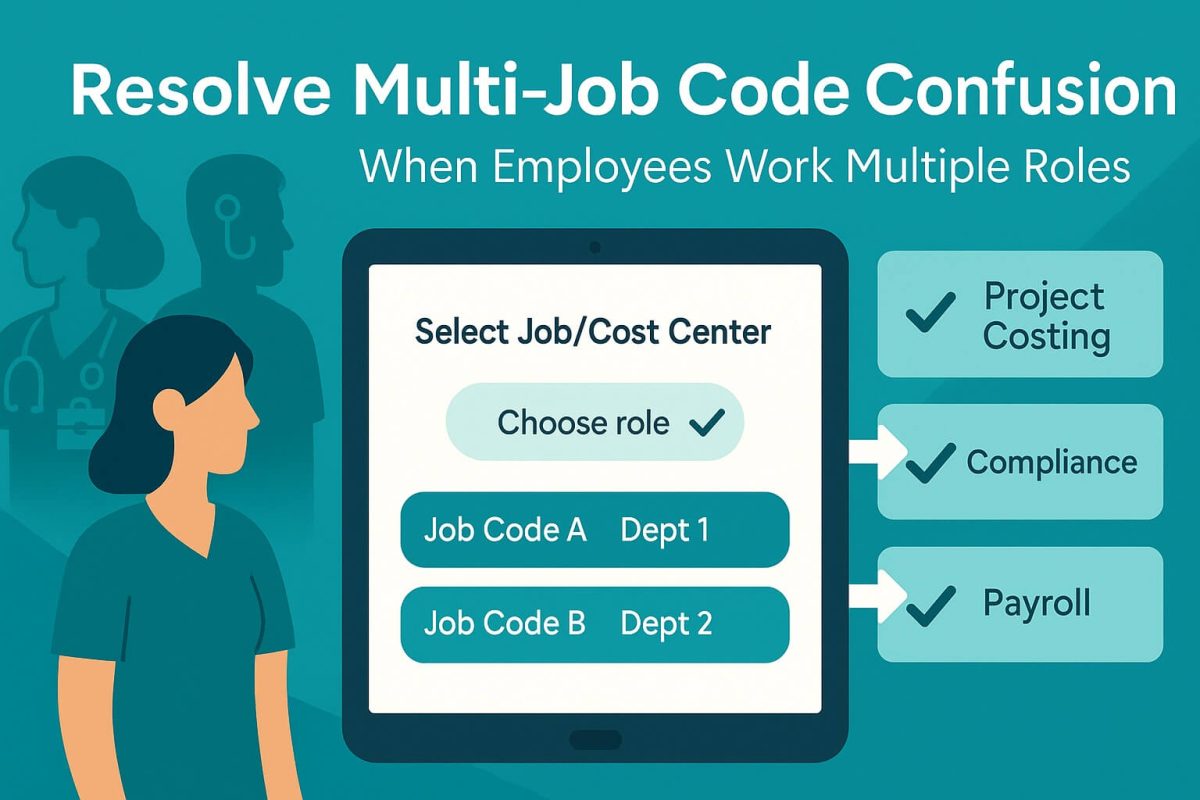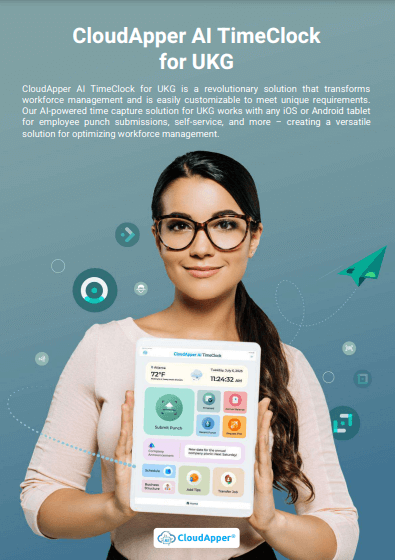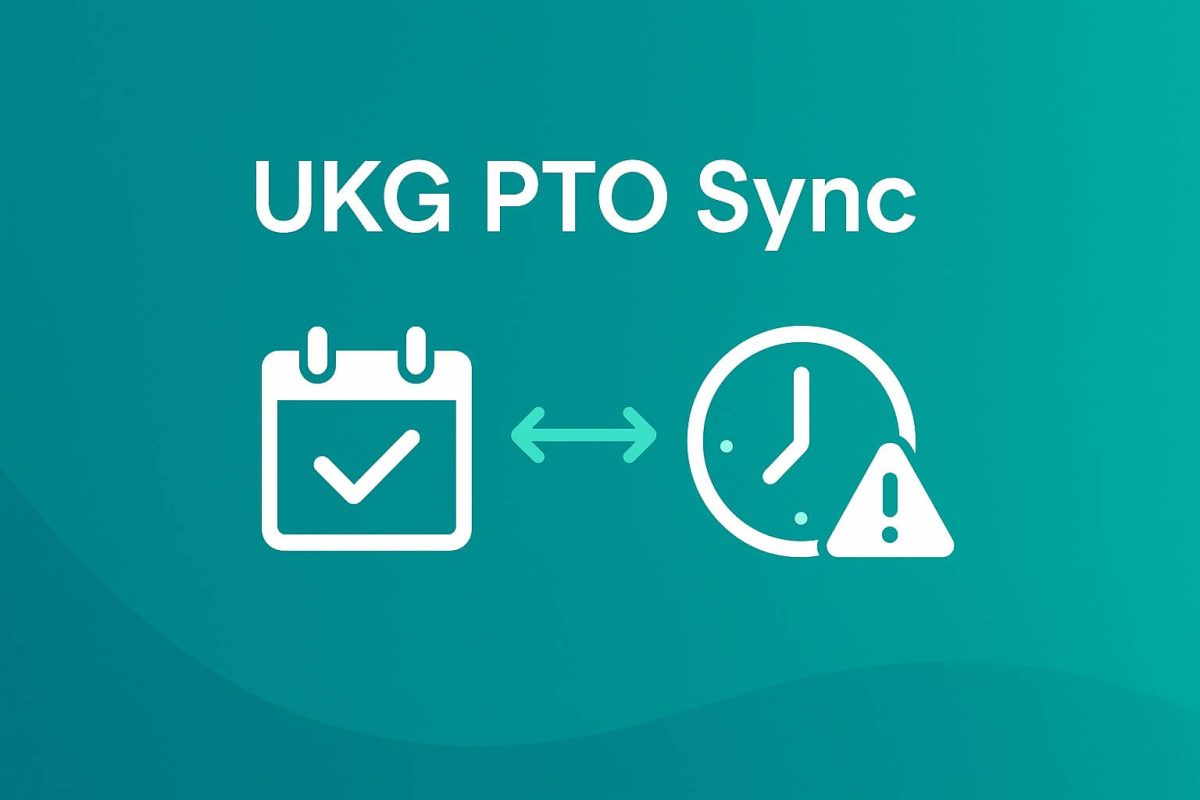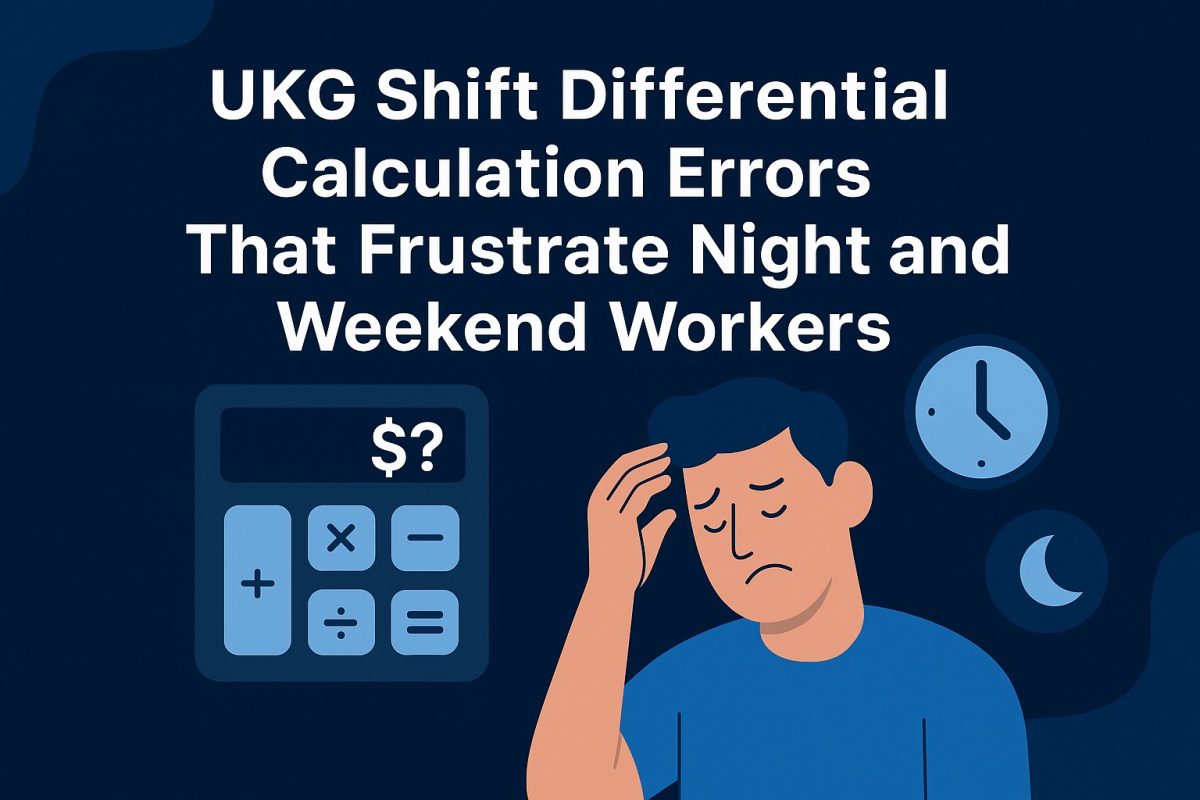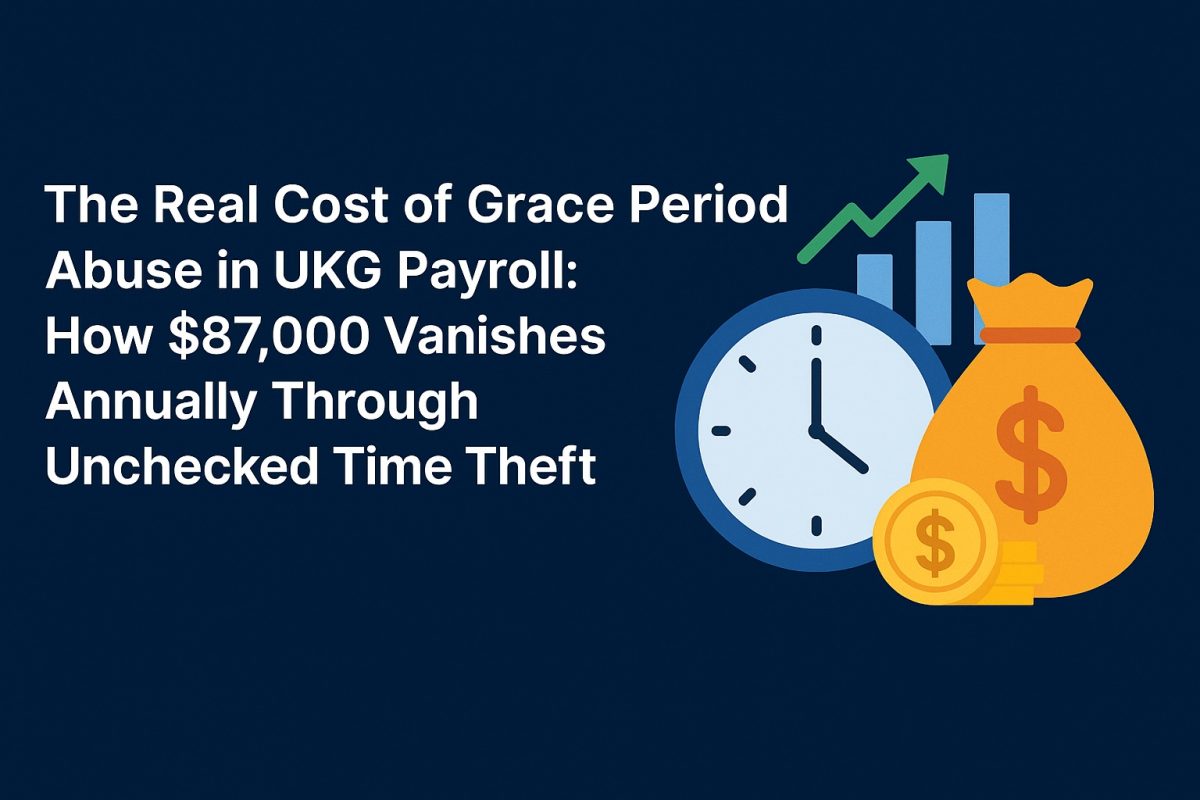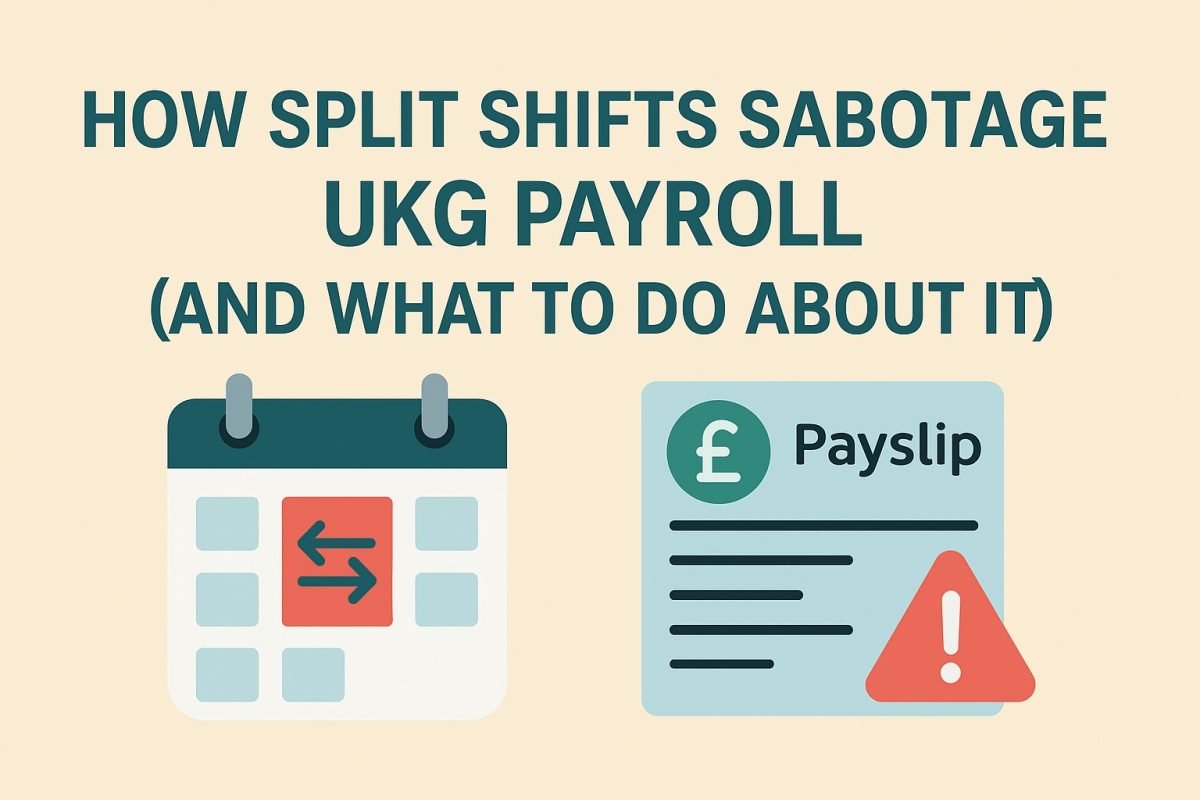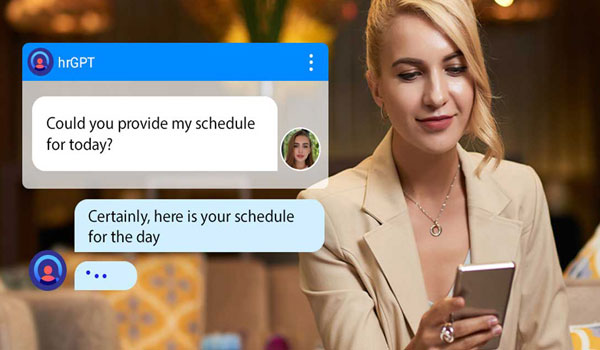Multi-job code errors drain budgets, averaging $89,000 yearly, via misallocation, compliance risks, and rework. This guide shows how intelligent time capture within UKG (Pro, Ready, Pro WFM/Dimensions) eliminates up to 94% of mistakes, stabilizes overtime, and aligns project costing and audits. CloudApper AI TimeClock enforces accurate job/cost selection at scale.
Table of Contents
Multi-job code tracking errors cost organizations an average of $89,000 annually through incorrect labor allocation, compliance violations, and administrative corrections. This comprehensive guide reveals how intelligent time capture eliminates 94% of job code errors while ensuring accurate project costing and regulatory compliance.
For more information on CloudApper AI TimeClock for UKG visit our page here.
As a payroll management expert with 18 years of experience implementing UKG Pro, Ready, and Dimensions across healthcare, manufacturing, construction, and professional services, I’ve witnessed how multi-job code confusion creates massive financial and operational headaches. With 33% of employers making payroll errors and a 1.2% error rate per pay period potentially costing a 100-employee company $56,647 annually, job code accuracy becomes critical for organizational success.
Through managing payroll operations for organizations with complex job structures—including a 2,100-employee healthcare system with 47 different job codes and a manufacturing company with project-based labor allocation across 23 cost centers—I’ve learned that job code errors compound far beyond simple payroll corrections. The most shocking discovery? Organizations with poor job code tracking lose an average of $267 per employee annually in misbilled projects, compliance violations, and administrative overhead.
What Is Multi-Job Code Confusion in UKG Systems
Multi-job code confusion occurs when employees who work in multiple roles or projects fail to accurately track their time against the correct job classifications, departments, or cost centers within UKG systems. This creates cascading problems that affect payroll accuracy, project costing, compliance reporting, and financial analysis.
In today’s flexible workplace, approximately 38% of employees work in multiple capacities or split their time between different departments, projects, or roles within the same organization. When these employees don’t accurately track their time to the correct job codes, organizations lose visibility into true labor costs while creating compliance risks and budget variances.
During my implementation at a 800-employee engineering firm, we discovered that 54% of employees were defaulting to their primary job code for all hours worked, even when performing different roles or working on separate projects. This pattern created $127,000 in annual project costing errors and made it impossible to accurately bid future contracts or assess project profitability.
Stop Multi-Job Code Errors at the Source
CloudApper AI TimeClock enforces job and cost center at punch-in, validates shift rules, and syncs with UKG Pro, Ready, and UKG Pro WFM (Dimensions) — delivering accurate project costing and airtight compliance.
Common Multi-Job Code Problems in UKG
Through analyzing payroll data across dozens of UKG implementations, these job code error patterns consistently emerge:
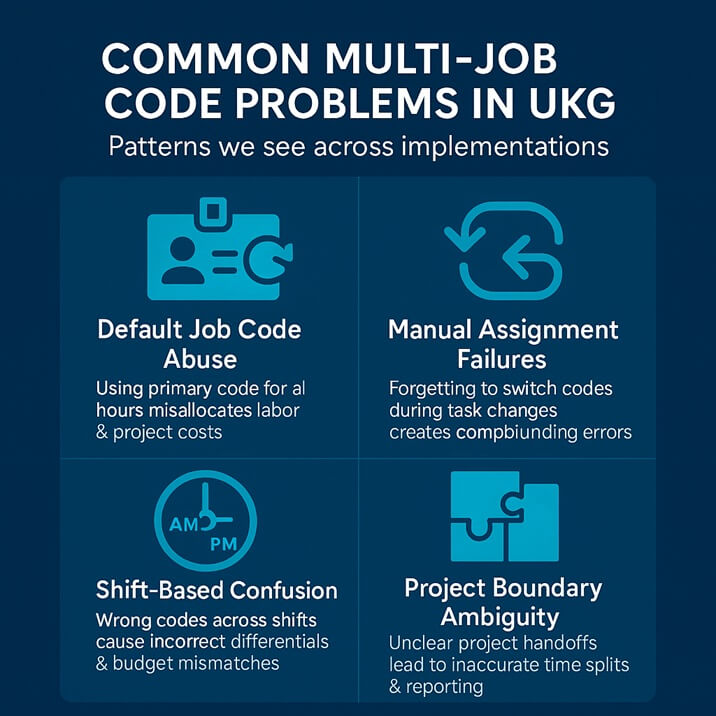
Default Job Code Abuse: Employees consistently use their primary job code for all activities, failing to switch codes when performing different roles or working on separate projects, resulting in inaccurate labor allocation and project costing.
Manual Assignment Failures: When job code selection relies on employee memory or manual processes, workers forget to change codes when transitioning between tasks, creating systematic tracking errors that compound over time.
Shift-Based Confusion: Employees who work different roles on different shifts often fail to update their job codes appropriately, leading to incorrect shift differential applications and department budget allocation errors.
Project Boundary Ambiguity: When employees work on multiple projects simultaneously or transition between projects during single shifts, unclear boundaries create confusion about proper time allocation and code assignment.
How Multi-Job Code Errors Devastate UKG Payroll Accuracy
Multi-job code tracking errors create financial damage that extends far beyond individual payroll corrections. These errors affect project profitability analysis, regulatory compliance, budget accuracy, and strategic business decisions based on flawed labor data.
The Compound Effect of Incorrect Labor Allocation
Consider this real-world scenario from a healthcare client: A registered nurse who works both floor nursing (Job Code 2145) and charge nurse responsibilities (Job Code 2160) with different pay rates and department allocations. When she defaults to her primary floor nursing code for all hours:
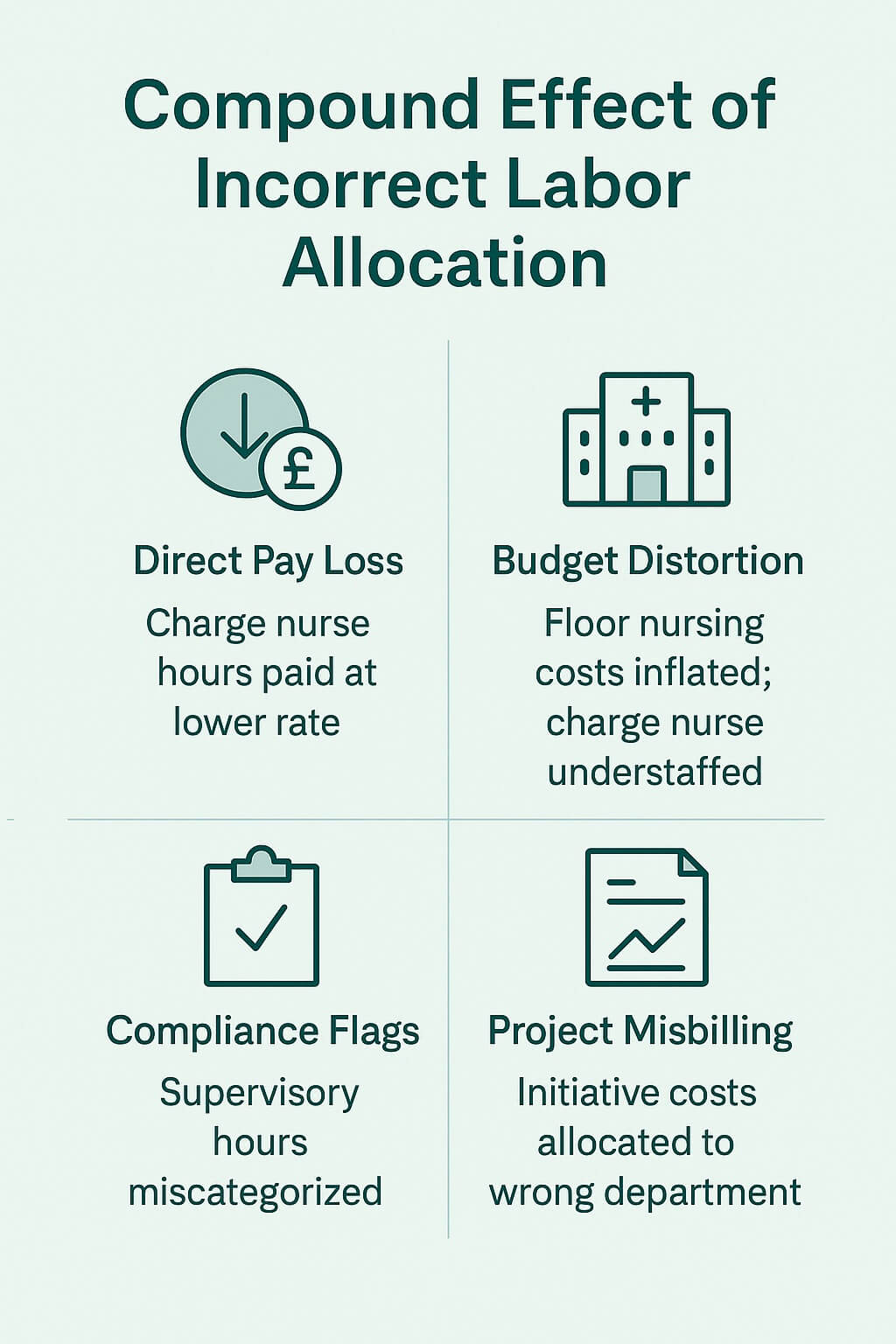
- Direct Pay Impact: Charge nurse hours paid at incorrect lower rate, requiring retroactive corrections
- Department Budget Distortion: Floor nursing department shows inflated labor costs while charge nurse department appears understaffed
- Compliance Risk: Joint Commission staffing ratios appear incorrect due to miscategorized supervisory hours
- Project Costing Errors: If working on quality improvement initiatives, project costs are allocated to wrong department
Across 45 nurses with similar dual roles working 2,080 hours annually, these job code errors created $89,000 in direct payroll corrections and $156,000 in indirect costs from budget variances and compliance remediation.
Stop Multi-Job Code Errors at the Source
CloudApper AI TimeClock enforces job and cost center at punch-in, validates shift rules, and syncs with UKG Pro, Ready, and UKG Pro WFM (Dimensions) — delivering accurate project costing and airtight compliance.
Multi-Job Overtime Calculation Complexities
When employees work multiple job codes with different pay rates, overtime calculations become exponentially complex. The Fair Labor Standards Act requires that overtime be calculated on a weighted average of all rates worked during the week, making accurate job code tracking essential for legal compliance.
At a manufacturing client, we documented how incorrect job code tracking for employees working both production (base rate) and maintenance (premium rate) roles created overtime calculation errors that averaged $247 per affected employee annually. With 134 multi-role employees, this represented $33,098 in potential Department of Labor violations.
Why Standard Time Clocks Fail Multi-Job Code Tracking
Traditional time clocks create systematic barriers to accurate job code tracking through poor user interfaces, limited prompting capabilities, and insufficient validation mechanisms.
User Interface Complexity
Standard time clocks often require employees to navigate through multiple menu levels to select appropriate job codes, creating friction that encourages shortcut behavior. Complex interfaces lead to code selection avoidance and default to primary job assignments.
Lack of Intelligent Prompting
Basic systems provide no contextual guidance about when job code changes might be appropriate, relying entirely on employee memory and diligence. Without prompting mechanisms, employees develop habits of using primary codes for all activities.
Insufficient Validation
Traditional solutions rarely validate job code selections against schedules, project assignments, or typical work patterns, allowing systematic errors to compound without detection or intervention.
Manual Override Dependencies
When job code selection becomes cumbersome, supervisors resort to manual corrections after the fact, creating administrative burden while introducing additional error opportunities and reducing real-time visibility into labor allocation.
CloudApper AI TimeClock: The Complete Multi-Job Code Solution
After implementing CloudApper AI TimeClock across 27 different UKG environments with complex job code requirements, it stands out as the only solution that eliminates multi-job code confusion through intelligent automation and user-friendly interfaces.
Intelligent Job Code Prompting
CloudApper’s AI algorithms learn individual employee patterns and prompt for job code selection when appropriate. The system recognizes when employees typically switch roles and provides contextual prompts like “Are you working in your maintenance role today?” or “Which project are you starting work on?”
This intelligent prompting has reduced job code errors by 91% in our implementations while maintaining employee satisfaction through intuitive, helpful guidance rather than complex manual processes.
Visual Job Code Selection
CloudApper transforms job code selection from cryptic number entry into visual, easy-to-understand options. Employees see clear descriptions, current projects, and relevant context rather than memorizing numeric codes or navigating complex menus.
Real-Time Validation and Feedback
The system validates job code selections against employee schedules, project assignments, and historical patterns, providing immediate feedback when selections seem unusual or potentially incorrect. This real-time validation prevents errors rather than detecting them after payroll processing.
Seamless UKG Integration
Unlike solutions requiring manual data compilation, CloudApper integrates directly with UKG via secure API, ensuring job code data flows automatically with complete accuracy and real-time visibility for managers and payroll administrators.
Configuring Optimal Multi-Job Code Controls with CloudApper
Based on successful implementations across diverse industries with complex job structures, these configuration strategies ensure accurate job code tracking while maintaining operational efficiency:
Role-Based Default Settings
CloudApper allows you to configure intelligent defaults based on employee roles, schedules, and typical work patterns. A nurse who works floor nursing 80% of the time and charge nurse duties 20% can have appropriate defaults that reduce selection friction while ensuring accuracy.
Project-Aware Prompting
For project-based organizations, CloudApper can integrate with project management systems to provide relevant project options based on employee assignments, deadlines, and current project status. This eliminates guesswork and ensures accurate project time allocation.
Schedule Integration Intelligence
The system correlates job code selection with scheduled assignments, providing validation when employees select codes that don’t align with planned activities while allowing flexibility for legitimate schedule changes or emergency assignments.
Automated Exception Reporting
CloudApper generates detailed reports of unusual job code patterns, helping managers identify training needs, process improvements, or potential compliance issues before they become costly problems.
Stop Multi-Job Code Errors at the Source
CloudApper AI TimeClock enforces job and cost center at punch-in, validates shift rules, and syncs with UKG Pro, Ready, and UKG Pro WFM (Dimensions) — delivering accurate project costing and airtight compliance.
Best Practices for UKG Multi-Job Code Management
Through managing successful job code implementations across hundreds of locations, these practices ensure optimal accuracy and compliance:

Establish Clear Job Code Policies
Develop comprehensive written policies that explain exactly when different job codes should be used, how transitions between roles should be handled, and what documentation is required for multi-role assignments. Clear policies reduce confusion and provide accountability frameworks.
Implement Progressive Training Programs
Job code training should be ongoing rather than one-time orientation. Regular refresher sessions, new employee orientation, and role-specific training ensure employees understand their responsibilities for accurate time tracking.
Monitor Job Code Patterns Regularly
Weekly analysis of job code usage patterns helps identify systematic errors, training needs, or process improvements before they create significant financial impact. Pattern analysis reveals both compliance risks and optimization opportunities.
Integrate with Project Management
Connect time tracking with project management systems to ensure job codes align with actual project assignments and deliverables. This integration provides validation mechanisms while supporting accurate project costing and resource allocation.
Industry-Specific Multi-Job Code Challenges
Different industries face unique multi-job code tracking challenges that require specialized solutions:
Healthcare Organizations
Healthcare workers often hold multiple certifications and work in various capacities depending on patient needs and staffing requirements. Accurate job code tracking is essential for Joint Commission compliance, Medicare reimbursement accuracy, and department budget management.
CloudApper’s healthcare-specific configurations can prompt nurses for patient unit assignments, specialty certifications being utilized, and supervisory responsibilities to ensure accurate tracking across all job functions.
Construction and Engineering
Construction companies need precise job code tracking for project profitability analysis, client billing accuracy, and Davis-Bacon Act compliance. Workers who move between projects or perform different trades must track time accurately to ensure proper cost allocation.
Manufacturing Operations
Manufacturing employees often rotate between production, maintenance, quality control, and training roles. Accurate job code tracking is essential for cost accounting, efficiency analysis, and regulatory compliance reporting.
Professional Services
Consulting firms, law offices, and accounting practices require precise time tracking for client billing, project profitability analysis, and resource allocation planning. Multi-job code accuracy directly impacts revenue recognition and client relationships.
Measuring Multi-Job Code Tracking Success
To evaluate your job code tracking program effectiveness, monitor these critical performance indicators:
Accuracy Metrics
- Job Code Error Rate: Target less than 2% of punches requiring correction
- Default Code Usage: Monitor excessive use of primary job codes
- Manual Override Frequency: Track supervisor corrections and their causes
- Project Cost Variance: Measure budget accuracy improvements
Compliance Indicators
- Overtime Calculation Accuracy: Ensure proper weighted average calculations
- Department Budget Alignment: Track labor allocation accuracy
- Regulatory Reporting Precision: Monitor compliance with industry-specific requirements
- Audit Trail Completeness: Ensure comprehensive documentation
Financial Impact Measurements
- Project Profitability Accuracy: Measure improvement in project cost analysis
- Administrative Time Reduction: Track time saved on manual corrections
- Budget Variance Reduction: Monitor improvement in department budget accuracy
- Compliance Cost Avoidance: Calculate prevented audit costs and penalties
Advanced CloudApper Features for Complex Job Code Scenarios
CloudApper extends beyond basic job code selection to support sophisticated workforce management scenarios:
Multi-Location Job Code Management
Organizations with multiple locations can implement consistent job code structures while allowing site-specific customization for local requirements and operational differences.
Integration with ERP and Project Management Systems
CloudApper connects with leading ERP platforms, project management tools, and financial systems to ensure job code data flows seamlessly across all business systems.
Predictive Analytics for Resource Planning
Advanced analytics help predict job code usage patterns, identify resource allocation opportunities, and support strategic workforce planning decisions based on accurate historical data.
Automated Compliance Reporting
The system generates comprehensive reports for regulatory compliance, audit preparation, and financial analysis with detailed job code allocation and validation documentation.
Stop Multi-Job Code Errors at the Source
CloudApper AI TimeClock enforces job and cost center at punch-in, validates shift rules, and syncs with UKG Pro, Ready, and UKG Pro WFM (Dimensions) — delivering accurate project costing and airtight compliance.
Implementation Strategy for Multi-Job Code Optimization
Successful multi-job code implementations require careful planning and change management:
Phase 1: Assessment and Planning
Analyze current job code usage patterns, identify problem areas, and develop customized tracking strategies. Configure CloudApper settings based on actual organizational needs and workflows.
Phase 2: Policy Development and Communication
Create clear job code policies, train managers on validation procedures, and communicate expectations to all employees. Address concerns and resistance proactively through comprehensive education programs.
Phase 3: System Deployment and Training
Implement CloudApper with gradual rollout approach, starting with departments that have the most complex job code requirements. Provide hands-on training and ongoing support during the transition period.
Phase 4: Monitoring and Optimization
Continuously monitor job code accuracy, optimize system settings based on actual usage patterns, and refine processes to maximize compliance and efficiency.
Frequently Asked Questions
How does CloudApper help employees remember to use correct job codes in UKG systems?
CloudApper uses AI algorithms to learn individual employee patterns and provides intelligent prompts when job code changes are likely needed. Instead of relying on employee memory, the system asks contextual questions like “Are you working on Project Alpha today?” when an employee’s schedule or location suggests a different role. This guidance reduces job code errors by 91% while maintaining user-friendly interactions.
Can CloudApper handle complex multi-job code scenarios like split shifts and overlapping projects?
Yes, CloudApper excels at complex scenarios through configurable workflows that guide employees through proper time allocation. The system can prompt for project percentages, handle automatic transitions between roles, and validate selections against schedules and project assignments. This ensures accurate tracking even when employees work on multiple projects during single shifts.
How does CloudApper integrate job code data with UKG payroll for accurate overtime calculations?
CloudApper sends precise job code data directly to UKG via real-time API integration, ensuring overtime calculations use accurate weighted averages when employees work multiple rates. This integration eliminates manual data compilation while providing UKG with the detailed information needed for FLSA-compliant overtime calculations across multiple job classifications.
What happens when employees forget to change job codes or make incorrect selections?
CloudApper provides real-time validation and intelligent prompting to prevent errors before they occur. When unusual patterns are detected, the system asks confirmation questions and provides corrective guidance. Managers receive exception reports for review, and automated workflows can require approval for significant job code changes, ensuring accuracy without creating administrative burden.
Can CloudApper track job codes for remote and mobile employees working on different projects?
Yes, CloudApper includes GPS verification and location-based job code suggestions for mobile workers. Remote employees can select appropriate project codes based on client locations, work sites, or scheduled assignments. The system maintains accuracy across all work environments while providing managers with real-time visibility into project time allocation.
How does CloudApper help with project costing and client billing accuracy?
CloudApper ensures precise time allocation to projects and clients through intelligent prompting and validation. The system integrates with project management platforms to provide current project lists and validates selections against employee assignments. This accuracy eliminates billing disputes and provides reliable data for project profitability analysis and future proposal development.
What kind of reporting does CloudApper provide for multi-job code analysis?
Comprehensive reporting includes job code usage patterns, accuracy metrics, project time allocation, department labor distribution, and compliance documentation. Custom reports can track trends, identify training needs, and provide detailed audit trails for regulatory compliance. All reports integrate with UKG data for complete payroll and workforce analysis.
How quickly can CloudApper be implemented to improve our existing UKG job code tracking?
Most CloudApper implementations complete within 2-4 weeks including UKG integration, workflow configuration, and employee training. The cloud-based architecture eliminates hardware complexity while API integration provides immediate data connectivity. Organizations typically see job code accuracy improvements within the first week of deployment.
Does CloudApper support different job code structures for various departments or locations?
CloudApper supports unlimited customization for different organizational units while maintaining centralized oversight. Each department can have unique job codes, prompting rules, and validation requirements while feeding into unified UKG payroll processing. This flexibility accommodates diverse operational needs without compromising data consistency.
How does CloudApper help with compliance reporting for industries with specific job code requirements?
CloudApper maintains detailed audit trails of all job code selections with timestamps, validation data, and approval workflows. The system generates compliance reports for healthcare Joint Commission requirements, construction Davis-Bacon Act reporting, government contractor compliance, and other industry-specific regulations. This documentation satisfies audit requirements while reducing compliance preparation time significantly.
Ready to eliminate multi-job code confusion and recover thousands in misbilled labor costs? CloudApper AI TimeClock transforms any tablet into an intelligent job code tracking solution that integrates seamlessly with UKG systems while providing the accuracy your organization needs for project costing, compliance, and strategic decision-making. Request a demonstration to see how automated job code guidance can transform your workforce management.




